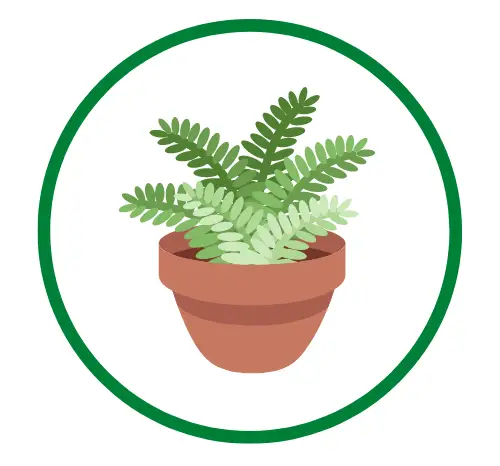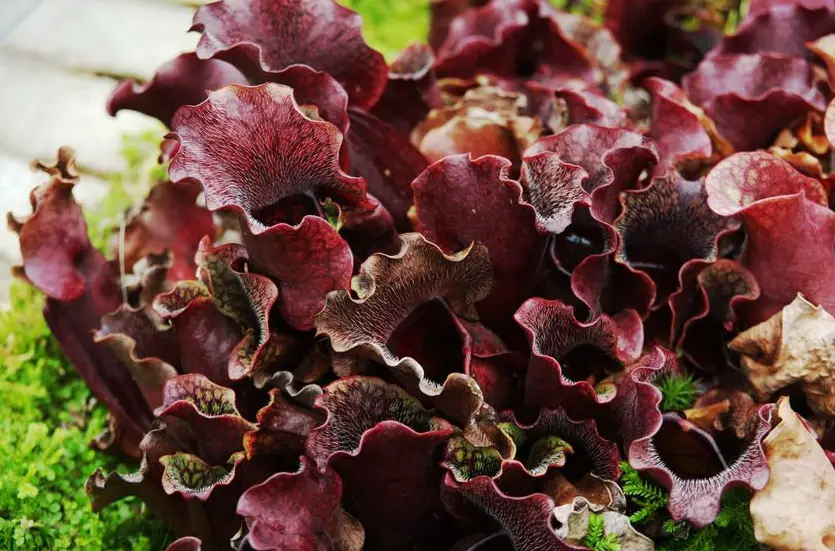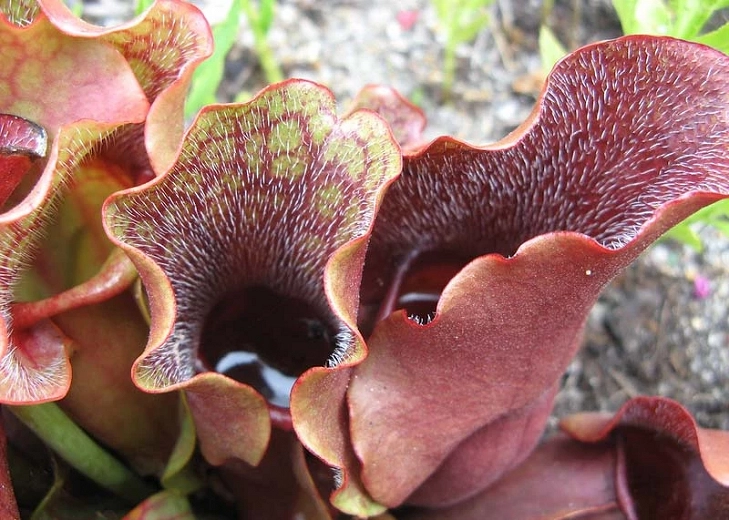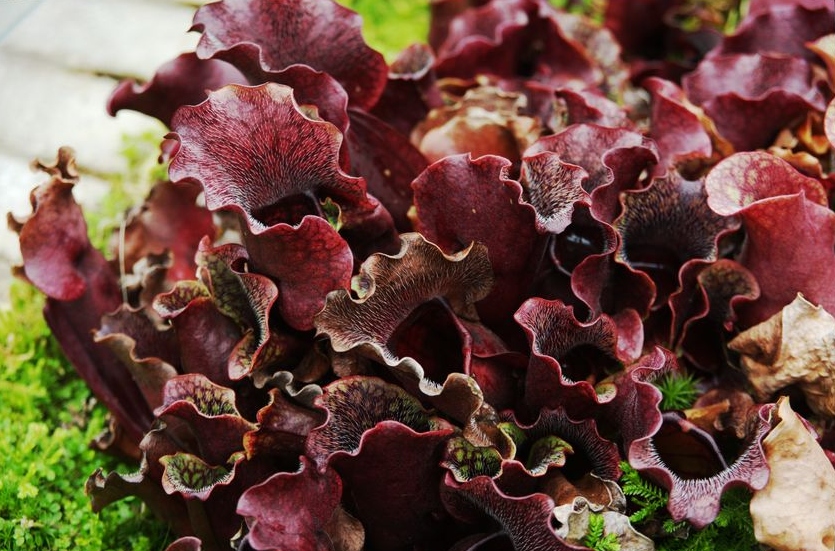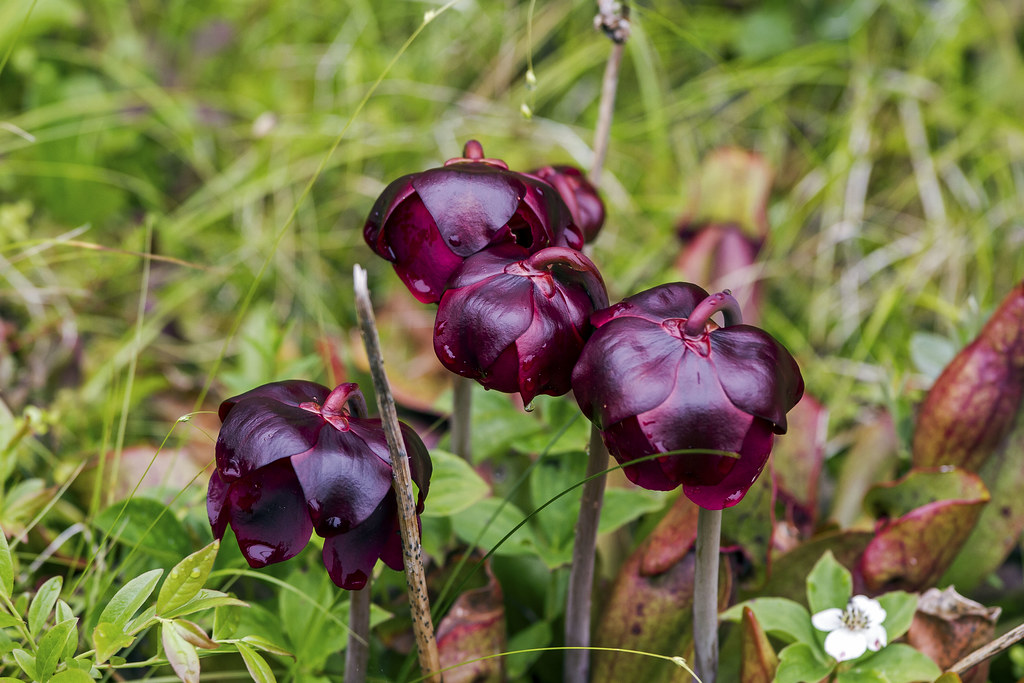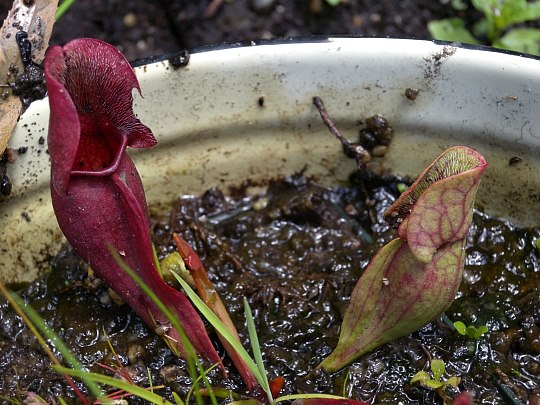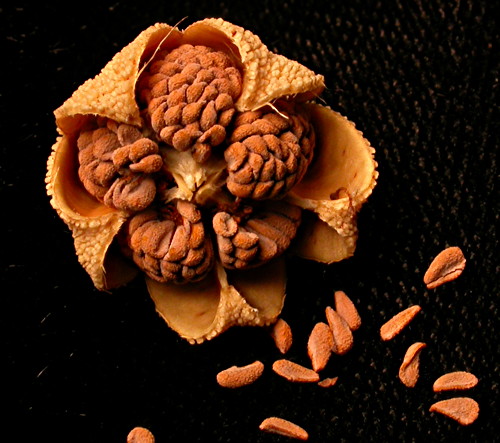Pitcher Plant (Sarracenia purpurea)
Characteristics of the purple pitcher plant
An evergreen perennial, Sarracenia purpurea grows at a moderate rate to a height and width of 0.3 m (1 ft) by 0.3 m (1 ft in).
See the USDA hardiness chart above. It can withstand UK zone 3. All year long, it is in leaf, and from April to May, it blooms. Hermaphrodites are the species (has both male and female organs).
Light (sandy), medium (loamy), and heavy (clay) soils are all suitable. pH levels that are suitable for growing include neutral, basic, moderately alkaline, and very acidic soils.
It may grow in full sun, light woods shade, or neither. It prefers moist ground.
Family
Sarraceniaceae
USDA toughness
4-9
Common Name purple pitcher plants
Purple Pitchers Plants, Pitchers Plants, Sweet Pitchers Plants, Purple Pitcherplant, Huntsman’s Cup, Com.
Zones – 2-7 (2-8)
Sarracenia purpurea purpurea, sometimes known as the Northern Purple Pitcher Plant, is a low-growing plant with short, thick traps that frequently display burgundy hue and crimson veins in broad sunlight.
Ease to Grow
Easy.
Local range
Eastern and northern North America peat bogs.
Light
Full sun to moderate sun outside, bright to brilliant indoors.
Purple Pitcher Plant description
This carnivorous plant sarracenia usually takes on a stunning deep ruby purple hue in the winter. The exterior pitcher surface has a waxy texture and a firm feel. It frequently forms colonies that are 4 feet or larger in size. Traps maintain their color for over two years and throughout the winter.
Early spring bloomers with fragrant deep red blooms on 12-inch scapes, Purple Pitcher plants bloom before the new traps appear. Sepals and flower stems persist throughout the year and resemble green daffodils.
It is native, comes in a number of cultivars, and is hardy to zone 2, ranging from Maryland to Newfoundland. Only this Sarracenia is found naturally north of Maryland.
Common names for this plant include Devil’s Boots, Side-Saddle Flower, and Hunter’s Cup. Homeopathic treatment during the colonial era was thought to provide relief from smallpox. Terrariums and backyard bog gardens up into Canada are good places for it.
Purple Pitcher In moist sphagnum moss, bare-root plants are delivered. It will be sent as a dormant rhizome with clipped off pitchers throughout its dormant season. Pictures are of the species, not the particular plant that was delivered. Being a seed strain, the veining and color may differ.
Identification of Pitcher Plant
The height of the pitcher plant ranges from 8 to 24 inches. Finding a rosette of tubular leaves developing around the base of the flower stalk may be the most accurate way to recognize the pitcher plant. The leaves can reach a length of eight inches.
They come in a variety of hues, including reddish-green (with purple veins), purple, and purplish red. A few insects are drawn to the scarlet hues and veins.
The leaves are altered to create pitchers, which are frequently half-filled with water. There are five different zones on each leaf:
- A flared flap containing nectar glands and vibrantly colored veins to draw in insect prey makes up the uppermost zone. There are two rounded lateral lobes on each flap. To entice the prey to fall into the pitcher, the inside of the flap is coated with downward-facing hairs. They also make it hard for the prey to escape by crawling back in.
- A smooth rim within the pitcher makes up the second zone. The smooth vertical surface, which the prey slides down, is coated in adhesive cells that are intended to attach to the prey’s feet and prevent further escape.
- The third zone is the pitcher’s main body, where the prey often perishes by drowning in the rainfall that gets stuck inside the pitcher. Digestive enzymes in the liquid in the pitcher start the digestive process.
- At the base of the pitcher is where you’ll find the fourth zone. Here, other glands further digest the prey.
- The long, slender stalk, which serves as a container for inedible animal remains, is the fifth and lowest zone of the pitcher. It has vascular tissue that transports some of the byproducts of photosynthesis and digestion to the seeds, blooms, and roots.
Every year, stems that grow from the rhizomes generate leaves. Throughout the year, plants often retain at least a few pitcher leaves. Only in the spring and summer do new pitcher leaves emerge. At the conclusion of the growth season, leaves may become crimson or a deep reddish purple.
The solitary, drooping blossom of the Pitcher Plant is another easily recognizable characteristic. The two to three inch broad blossom rises to the summit of a two foot tall woody, leafless stem. Bright crimson and spherical, the petals last for a short time on the plant before falling off.
The remaining hard floral structure endures throughout the summer and into the fall. This comprises of five sepals with somewhat more acute points on each. The sepals often have an exterior coloration of dark crimson or red-purple and an inside coloration of yellow.
The sepals converge around a greenish-yellow style that enlarges into an umbrella-like structure that is occasionally splattered with deep crimson. The Pitcher Plants has many stamens, most of which are obscured by the style.
Uses of Purple Pitcher Plant
Native American tribes are said to have utilized the Pitcher Plant to cure renal issues, whooping cough, pneumonia, lower back discomfort, fever, and chills. Some tribes, like the Algonquin, used an infusion of leaves to help with birthing; the Cree allegedly offered women a decoction of the root to avoid postpartum illness.
Several Native American tribes also employed the herb to cure and prevent smallpox, however there are conflicting accounts of its efficacy.
Cultivation details
Container, specimen, and woodland garden uses in landscaping. In peat or moss, grow in full sun or light shade. need a place that is wet yet well-drained. In a loose compost of sphagnum peat, living sphagnum, and coarse acid sand, plants need constant moisture.
They may be cultivated effectively in a pot that is submerged in a deep saucer of water or in a plastic bowl. It thrives in a swampy environment with low-nitrogen soil as an insectivorous plant. Insects become trapped in the cups-shaped leaves, drown, and are then consumed by the plant as food. It is a very decorative and polymorphic plant that is listed on the CITES II list of endangered species because it is becoming more scarce in the wild.
Propagation
We don’t have any information on the seed for this species, but we’d advise sowing it in a cold frame in the mild shade as soon as it’s ready, if not in the early spring. Prick the seedlings out into individual pots when they are big enough to handle them, and continue to grow them in the greenhouse for at least their first winter.
After the final anticipated frost, plant them in their permanent locations in late spring or early summer. For their first winter outdoors, give the plants some protection from the cold. It could be feasible to divide.
